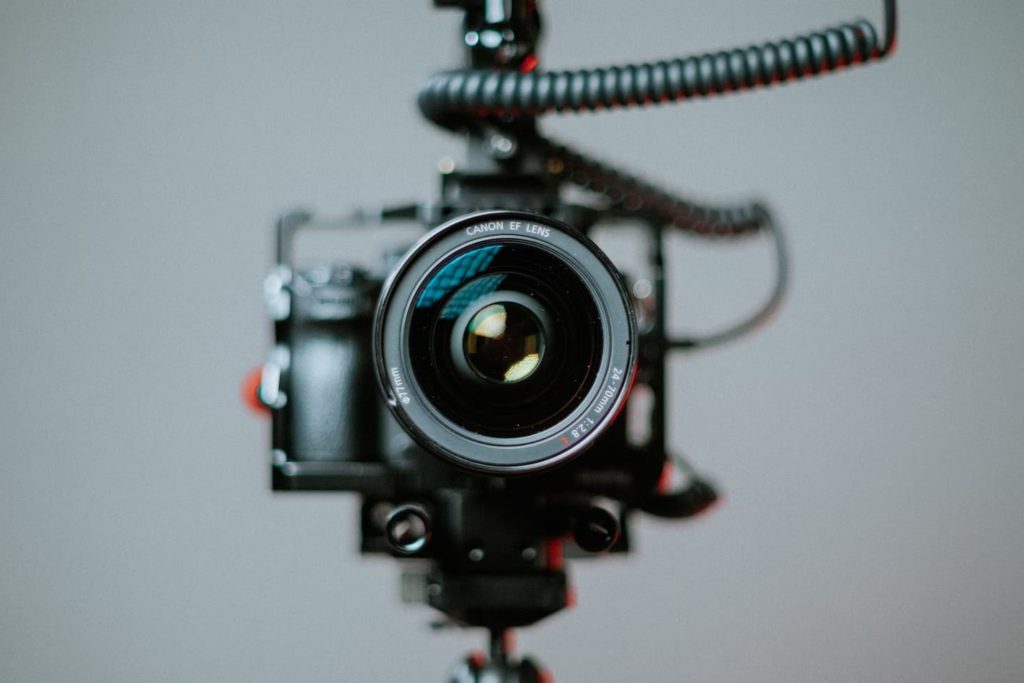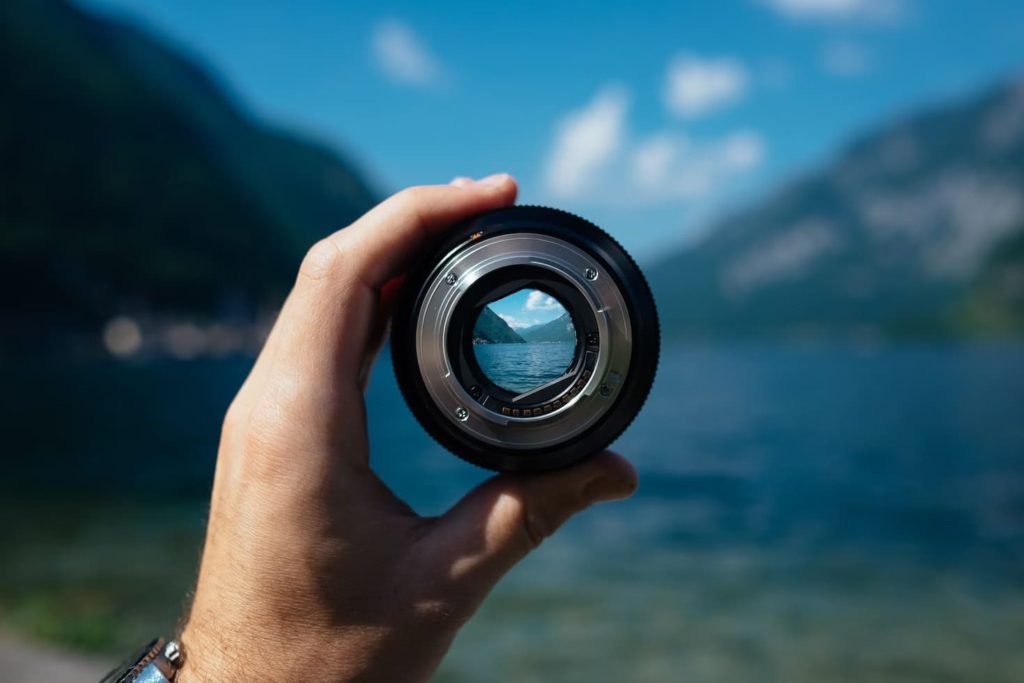Deep Focus Cinematography: What is Deep Focus? (with Shot Examples)
When we sit down to watch movies we may not always realize all of the consideration that has gone into the shot, and the techniques that are being used. One of the oldest techniques in the book is covered in this guide. What is deep focus cinematography? How is this type of shot used to create a certain atmosphere or feeling within a film or video and when is it essential?
Deep focus cinematography is when a large section of what is on screen is in perfect focus. Often, video has a more shallow focus. For instance, a shot that is focusing on one person talking will usually only have that person in focus. The rest of the detail in the shot, including the background, will be out of focus. The detail is not necessarily required and only having the subject in focus can be a way for the director to show people who or what they should focus on. Deep focus keeps the whole shot in focus.
One example of deep focus in cinematography would be a scene where there are important things happening in the foreground and the background. The director may want the viewer to notice what is happening behind people having a conversation. If the shot is one where there is a large meeting or debate then there is every chance that the director will use deep focus to ensure everyone involved is shown. It could also be used on a crowd shot, for instance.
Understanding Deep Focus

To fully understand the concept, it is vital to get your head around how directors used a cinematography deep focus shot and what it takes to achieve this.
When a camera or video camera is used to take a shot, there is a natural depth of field. This is determined by a number of factors, but basically refers to how much of the shot is in focus, as well as foreground and background detail. In portrait photography or interview videos we’re used to seeing a narrow depth of field. This means that the ‘field’ of focus is limited, and only items at a certain distance from the camera will be in focus. Everything else will blur away out of focus.
On the other end of the spectrum, a large or deep depth of field makes more fall into focus. An easy comparison is to consider taking a photo of an individual person or taking a photo of a group of people, some standing in front of others. A wide, large depth of field is needed for the group shot to capture more detail and keep more of what is going on in focus.
A small aperture may be used to achieve a longer depth of field. Small apertures relate to the hole in most cameras that allows light to pass through and enter the sensor. A small, pinhole-style aperture keeps more detailed. Some cameras may also have a small camera sensor which allows for short focal lengths. The focal length is the difference between the lens and the sensor. The shorter lenses are called wide-angle lenses as they allow a much wider focus, which may be exactly what a director wants when using deep focus in cinematography.
The idea to use deep focus will probably come into the very early stages, as early as storyboarding and pre-production. This allows the crew to properly plan ahead and ensure the shot is captured perfectly.
Deep Space or Deep Staging
Deep focus is often used along with a technique that those in the industry call deep staging or deep space. This is a use of mise-en-scene that places things or people around different parts of the picture and scene. This makes it an artistic option, as many directors choose to use this for a variety of reasons (explored below). The likes of Stanley Kubrick, Orson Welles, Terry Gilliam and Jean Renoir are all known for using this technique. It certainly provides a certain look to their films, making it a stylistic choice.
Why Use Deep Focus?

Understanding that in cinematography deep focus is just one of a number of choices leads to the next question; why use deep focus?
This is a tool, and as the talented team at Insight Studios knows all too well, knowing when to use the right tools to achieve a certain result is a huge part of the job.
Each director has their own reasons, of course, but we explore some of the popular rationale for using deep focus here:
To give a sense of timelessness and classical cinema. The technique has been used by some cinematic greats. For that reason, deep focus shots can be timeless, classical, and less prone to looking old compared to certain shallow focus techniques, which may be trendy during a specific period but can age the film. Trends are always evolving.
Deep focus can create a more realistic view of a scene, plunging the audience into the middle of the action as it resembles how our eyes naturally tend to perceive the world. By allowing the viewer to see everything, it immerses them into the film’s world, enhancing the sense of presence and realism.
Deep focus allows the audience to see multiple elements of a scene clearly, providing more visual information about the characters, their surroundings, and the context of the story. This can tie in with production design, where a team of people has worked hard to make a set look a certain way, and don’t want this effort to go to waste.
In certain scenes, deep focus can be used to highlight relationships between characters. For example, if two characters are having a conversation, the use of deep focus can show their expressions and body language while also revealing the environment they are in, which may add meaning. If a group of people are having a conversation it might be that the deep focus technique is used to keep everybody visible.
Deep focus can be pleasing to the eye adds a sense of richness to the frame. It enables the director to create visually stunning shots that show intricate details in both the foreground and background, making the shot itself far more engaging, as you will see some from of the deep focus cinematography examples shared below.
Of course, all directors and cinematographers have their own reasons and preferred techniques, and almost all directors like to vary the shots they use in films. In many ways, it is this variety that forms a huge part of the art form. Deep focus shots are used in some iconic shots throughout history, though.
Best Deep Focus Cinematography Examples
Let’s look at some of the best deep focus cinematography examples from films throughout history. How has this technique evolved through the years?
Citizen Kane
This is one of the most iconic examples of early, pioneering use of a cinematography deep focus shot. Citizen Kane used this as a way to keep a lot of action in the frame but also to tell the story of Kane, who was gradually losing some of his authority, as shown by the reactions of other characters.
In these examples, put together in an analysis video on YouTube, we see how effective the technique really is, and what a big difference it has. For example, we can even see the child in the background playing in the snow. This is clearly a deliberate decision by the director and a way to build a more interesting and full picture of what is going on around us.
Citizen Kane is widely regarded to be one of the films where this technique was first used in a serious nature.
The Shining
In classic horror film The Shining, there are a lot of wide deep focus shots. The setting of the film is meant to feel isolated, and by showing the hotel in the middle of nowhere, in all of its glory, the feeling of isolation grows.
Gravity
In this long continuous shot, we see some of the best deep focus cinematography techniques used to show viewers more about the setting. For one thing, we see the isolation of the duo in space, and how far they are from civilization. It also allows us to see the stunning special effects in all of their detail even while the characters and camera angles are changing. This ambitious deep focus shot is a great example of how the technique can be used to make a huge difference to the feel of the film.
Using Deep Focus Shots in Your Production
Deep focus shots are not necessarily just for feature films, they can be used in a variety of different scenarios and situations, from advertisements to corporate videos. Understanding depth of field is one of the keys of cinematography and film direction. The technique has developed and grown over the years and can yield amazing results when used to good effect.
To make full use of deep focus shots as well as a huge repertoire of other excellent techniques, reach out to our professional team today.